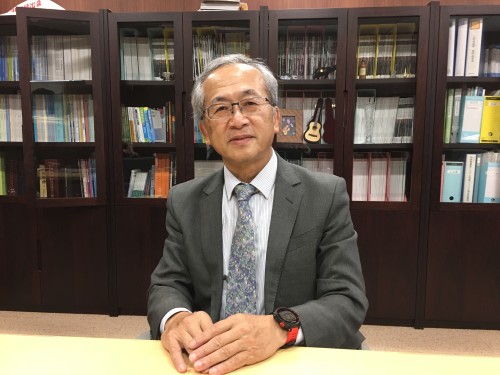
Money matters: Yasuhiro Iye is an executive director of the Japan Society for the Promotion of Science. (Courtesy: Matin Durrani)
By Matin Durrani in Tokyo, Japan
“Budget.”
That was the one-word answer from Yasuhiro Iye, when I asked him what was the most important thing on his mind as executive director of the Japan Society for the Promotion of Science (JSPS).
The society, which was founded in 1932, is responsible for funding researchers in Japan across all sectors of science, engineering and humanities. In 2015 the JSPS distributed about ¥260bn (about $2.27bn) in grants, which are awarded competitively through a rigorous peer-review process, with physicists receiving roughly 15% of the total.
It might sound a lot of money, but as Iye points out, the JSPS’s total budget has been pretty static in recent years. Money for science, Iye admits, is not as generous in Japan as in the past, which he blames on rising social-security costs to deal with the growing number of old people. “The Japanese government budget is constrained by the cost of an ageing society,” Iye says.
I was talking to Iye, who is a former condensed-matter physicist at the Institute for Solid-State Physics at the University of Tokyo, in his offices at the JSPS headquarters in Tokyo as part of a week-long trip to Japan with my colleagues from IOP Publishing, Michael Banks and Elaine Tham.
Iye revealed that he first got interested in physics after attending a summer school at the University of Sydney in Australia, where he attended lectures by top physicists Wolfgang Panofsky and Richard Dalitz.
He later spent a period in the US at the iconic Bell Labs, but Iye admits that fewer of today’s young researchers in Japan want to go abroad. “In my generation, the research environment in Japan was poor and so it made sense to go overseas,” says Iye. “But now the situation in Japan is very different, with labs here often better equipped than anywhere else. We’ve become a victim of our success. Young Japanese researchers are less inclined to go away.”
Indeed, Iye admits that, as with other nations, it is getting harder to encourage Japanese school-leavers to go into physics in the first place. That’s why he was delighted that the Japanese media gave lots of coverage to the recent discovery of gravitational waves and to the detection of two colliding neutron stars. Indeed, the Ministry of Education, Culture, Sports, Science and Technology (MEXT), which funds the JSPS, is also spending Y40bn on building the KAGRA gravitational-wave detector, which Michael will be visiting on Thursday. Let’s hope KAGRA can reinvigorate some of that interest in physics.
Guidelines
Show/hide formatting guidelines
this text was deletedwhere people live in harmony with nature and animals</q>
Some text